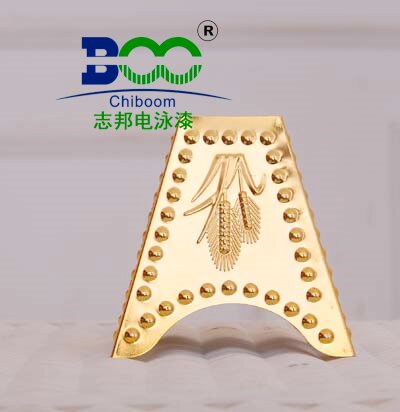How to solve the problem of bubbles in electrophoretic paint
The following is the English translation of the entire article:
Analysis and Solutions to Bubble Issues in Electrophoresis Paint
I. Description of Bubble Phenomena in Electrophoresis Paint
During the process of electrophoresis coating, abnormal foam accumulation on the surface of the electrophoresis tank is a common issue. In mild cases, a thin layer of foam covers the surface of the tank liquid, while in severe cases, the entire tank surface is heavily piled up with foam, even overflowing the tank. These bubbles not only affect the coating efficiency but also lead to defects on the coating surface, reducing product quality.
II. Causes of Bubbles in Electrophoresis Paint
The causes of bubbles in electrophoresis paint are varied but can be primarily attributed to the following:
Air Introduced by Coated Workpieces:
Complexly structured workpieces, such as those with intricate holes or grooves, tend to introduce a significant amount of air when entering the electrophoresis tank.
Incomplete cleaning of workpieces and hangers during the pretreatment process leaves behind residual water and impurities that generate bubbles during electrophoresis.
Excessive Electrolysis Reaction:
Setting the voltage too high during electrophoresis coating accelerates the electrolysis reaction, leading to an increased production of bubbles.
Elevated electrolyte concentration or temperature in the tank liquid also intensifies the electrolysis reaction, resulting in more bubbles.
Issues with Circulation System:
The circulation and stirring system of the electrophoresis tank may have air intrusion issues, such as poor sealing of the circulation pump.
Uneven or too low flow rates in the circulation system prevent timely elimination of bubbles from the tank liquid.

III. Solutions to Bubbles in Electrophoresis Paint
To address the issue of bubbles in electrophoresis paint, the following measures can be taken:
Optimize the Handling of Coated Workpieces:
Improve the suspension method of workpieces to minimize the amount of air introduced when entering the electrophoresis tank.
Strengthen the pretreatment process for workpieces and hangers to ensure thorough cleaning without residual water and impurities.
Adjust Electrophoresis Parameters:
Appropriately lower the electrophoresis voltage to slow down the electrolysis reaction and reduce bubble production.
Control the electrolyte concentration and temperature in the tank liquid within a reasonable range.
Improve the Circulation System:
Inspect and repair the sealing of equipment such as circulation pumps to ensure no air leakage.
Increase stirring intensity and adjust valves or replace filter bags to enhance the surface flow rate of the tank liquid, allowing timely elimination of bubbles.
Regularly clean impurities and sediments in the circulation system to maintain its smooth operation.
Other Auxiliary Measures:
Add an appropriate amount of defoamer to the electrophoresis tank liquid to help eliminate existing bubbles.
Strengthen monitoring and inspection during the electrophoresis coating process to promptly detect and address bubble issues.
IV. Conclusion
The issue of bubbles in electrophoresis paint requires a comprehensive approach. By optimizing the handling of coated workpieces, adjusting electrophoresis parameters, improving the circulation system, and adopting other auxiliary measures, we can effectively solve the problem of bubbles in electrophoresis paint, enhancing coating quality and efficiency. Additionally, strengthening daily management and maintenance work is also an essential measure to prevent bubble issues in electrophoresis coating.





 WeChat
WeChat